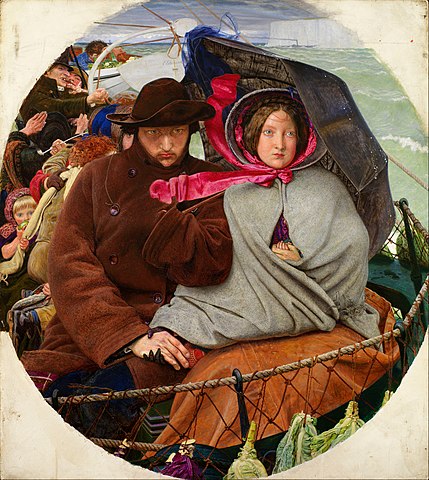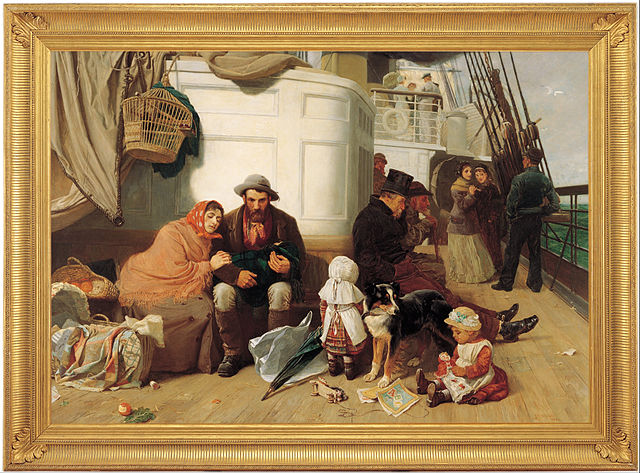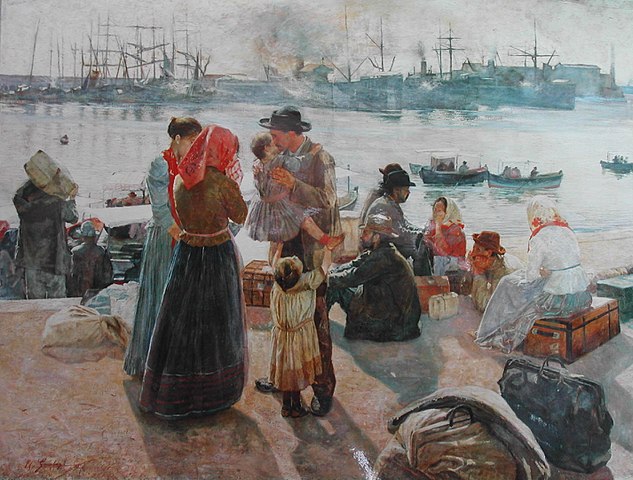
Each 18 December is celebrated as United Nations (UN) International Migrants Day.
A migrant is a person who migrates, a word deriving from a Latin term meaning to remove, depart, or move from one place to another.
The Thammasat University Library collection includes several books about different aspects of the migrant experience.
As the UN website notes,
Work is the major reason that people migrate internationally, and migrant workers constitute a large majority of the world’s international migrants.
A broad range of factors continue to determine the movement of people. They are either voluntary or forced movements as a result of the increased magnitude and frequency of disasters, economic challenges and extreme poverty or conflict. Approximately 281 million people were international migrants in 2020, representing 3.6 per cent of the global population.
All these will significantly affect the characteristics and scale of migration in the future and determine the strategies and policies countries must develop in order to harness the potential of migration while ensuring the fundamental human rights of migrants are protected.
2021 THEME: HARNESSING THE POTENTIAL OF HUMAN MOBILITY
Migrants contribute with their knowledge, networks, and skills to build stronger, more resilient communities. The global social and economic landscape can be shaped through impactful decisions to address the challenges and opportunities presented by global mobility and people on the move.
The Global Compact for Safe, Orderly and Regular Migration (GCM) offers the opportunity and guidance to actualize human mobility and seize the opportunities it presents.
The International Organization for Migration (IOM) has assisted millions of migrants since it emerged 70 years ago to assist the vast number of Europeans displaced by the Second World War and continues to lead the way in promoting a humane and orderly management of migration for the benefit of all, including the communities of origin, transit and destination.

The UN website observes,
Since the earliest times, humanity has been on the move. Some people move in search of work or economic opportunities, to join family, or to study. Others move to escape conflict, persecution, terrorism, or human rights violations. Still others move in response to the adverse effects of climate change, natural disasters, or other environmental factors.
Today, more people than ever live in a country other than the one in which they were born. According to the IOM World Migration Report 2020, as of June 2019 the number of international migrants was estimated to be almost 272 million globally, 51 million more than in 2010. Nearly two thirds were labour migrants. International migrants comprised 3.5 per cent of the global population in 2019. This compared to 2.8 per cent in 2000 and 2.3 per cent in 1980.
While many individuals migrate out of choice, many others migrate out of necessity. According to UNHCR, the number of globally forcibly displaced people worldwide was 79.5 million at the end of 2019. Of these, 26 million were refugees (20.4 million refugees under UNHCR’s mandate, 5.6 million Palestine refugees under UNRWA’s mandate). 45.7 million people were internally displaced, 4.2 million were asylum-seekers, and 3.6 million were Venezuelans displaced abroad.
The UN Migration Agency (IOM) defines a migrant as any person who is moving or has moved across an international border or within a State away from his/her habitual place of residence, regardless of (1) the person’s legal status; (2) whether the movement is voluntary or involuntary; (3) what the causes for the movement are; or (4) what the length of the stay is.
Migrants and the SDGs
The 2030 Agenda for Sustainable Development recognizes for the first time the contribution of migration to sustainable development. 11 out of the 17 Sustainable Development Goals (SDGs) contain targets and indicators relevant to migration or mobility. The Agenda’s core principle is to “leave no one behind,” not even migrants.
The SDGs’ central reference to migration is made in target 10.7: to facilitate orderly, safe, regular and responsible migration and mobility of people, including through the implementation of planned and well-managed migration policies. Other targets directly related to migration mention trafficking, remittances, international student mobility and more. Moreover, migration is indirectly relevant to many more cross-cutting targets.
The International Organization for Migration (IOM)
Established in 1951, IOM is the leading inter-governmental organization in the field of migration. IOM works to ensure the orderly and humane management of migration, to promote international cooperation on migration issues, to assist in the search for practical solutions to migration problems and to provide humanitarian assistance to migrants in need, including refugees and internally displaced people. In 2016, IOM entered into an agreement with the United Nations (A/70/976), becoming one of its specialized agencies.
To promote diversity and inclusion of migrants in society, IOM has developed the platform ‘i am a migrant,’ which features first-hand accounts from individuals, providing insights into the experiences of migrants of all backgrounds and throughout their migratory journeys.
Data on migration
In 2019, the number of international migrants worldwide – people residing in a country other than their country of birth – reached almost 272 million (from 258 million in 2017). Female migrants constituted 48 per cent of international migrants. There were an estimated 38 million migrant children, three out of four international migrants were of working age, meaning between 20 and 64 years old. 164 million were migrant workers. Approximately 31% of the international migrants worldwide resided in Asia, 30% in Europe, 26% in the Americas, 10% in Africa and 3% in Oceania [Source: Global Migration Data Portal].
It can be a challenge to make sense of available migration data, as this is often scattered across different organisations and agencies, and not easily comparable. IOM’s Global Migration Data Analysis Centre runs the Global Migration Data Portal, which serves as a unique access point to timely, comprehensive migration statistics and reliable information about migration data globally. The site presents migration data from diverse sources and aims to help policy makers, national statistical officers, journalists and the general public interested in migration to navigate the increasingly complex landscape of migration data…
Global Action
UN Member States adopted a set of commitments, known as the New York Declaration for Refugees and Migrants (A/RES/71/1), in which they recognized the need for a comprehensive approach to migration. The New York Declaration acknowledges the positive contribution of migrants to sustainable and inclusive development, and commits to protecting the safety, dignity and human rights and fundamental freedoms of all migrants, regardless of their migratory status…
As a result of the New York Declaration, UN Member States agreed to work together to develop the Global Compact for Safe, Orderly and Regular Migration, adopted at an intergovernmental conference on international migration in December 2018 in Morocco. The GCM covers diverse issues such as strengthening labour rights for migrant workers, improving migration data as a basis for evidence-based policies, saving lives and establishing international efforts on missing migrants, and many others. The implementation of the GCM will represent progress in governing migration in a way that increases its benefits for individuals, communities and countries, and reduces its risks for all…

(All images courtesy of Wikimedia Commons)
